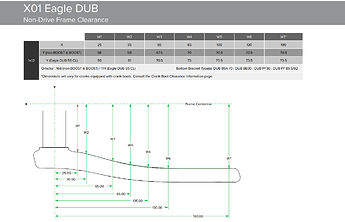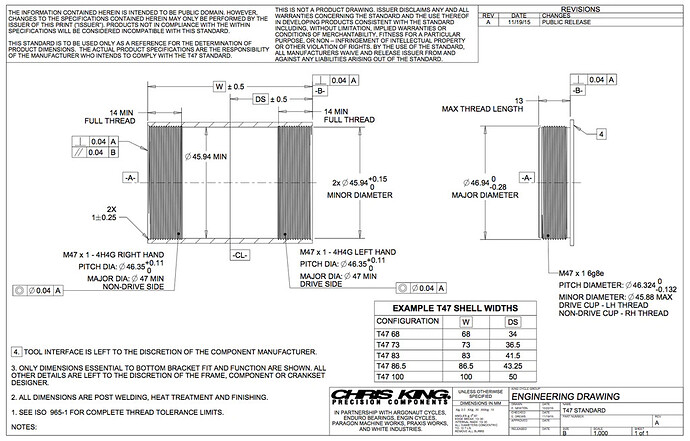A quick history lesson might be in order here.
We’ll skip the pre-1990s stuff because there was a lot of odd stuff going on (126 Campy spaced MTBs!) and none is relevant now, but:
1: In the 1990s, every mountain bike was 135mm QR. Note: this is the same hub as 142x12! This was the era of triple cranks (3 rings) and the chainline was measured to the center of the middle chainring. This chainline was 47.5mm for a LOOONG time. Why? Because it’s about where the middle of an HG cassette sits - hence, perfectly straight chainline in your middle ring in the middle of the cassette.
2: Fast forward to the mid 2000s, when bigger tires are starting to be a thing (ie, bigger than 2.1", and no, this is not a joke) Frame manufacturers are suddenly having trouble squeezing everything in, especially those annoying 29er tires, so the chainline moves to 49/50mm for most bikes, though the hub/cassette remain the same. This still shifts ok, though it does run rough in the lower gears sometimes if you’re a middle-ring-only kinda guy.
3: It’s 2010, and front derailleurs haven’t gone away yet, but everyone wants a 29er. Crap! Let’s gain ourselves just a bit of room - how far out can we push things without screwing with the normal BB shells/Q factor customers expect?
The answer: 3mm on each side. Those who are paying attention will notice that bikes from this era are all 2x10 - because there’s not enough space to push the former 3x/44t big rings out any further (nor as much need for them with 29" wheels) so they have been scrapped.
4: Ok, it’s 2012 and everyone is on 1x. No more granny gears, no more front derailleurs. We can run a ring in the old 3x “big ring” position (ie 55-58mm chainline) without a problem if we move the cassette out enough to match. Boom! 157x12 superboost! Lots of space to fit ring/chainstay/tire, stronger rear wheel, etc. What’s not to love?
Superboost is what boost probably always should have been. It’s my go-to configuration for all mountain bikes. That said, normal boost will quite possibly win the standards war, though it’s obviously inferior.
If we back all the way up to the 90s, and we were aiming for a straight chainline in the middle of the casssette, the chainlines would be:
142x12/135QR: 47.5mm
148x12/boost: 50.5mm
157x12/SB+: 55mm
In practice it’s all over the place and you can get away with going ~3mm wider chainline on any of those options without real problems, even with pretty short chainstays. With really long chainstays you can go as nuts as you want, since the angle that the chain and cassette meet is the limiting factor.
YMMV.
Hopefully that’s useful.
-Walt


